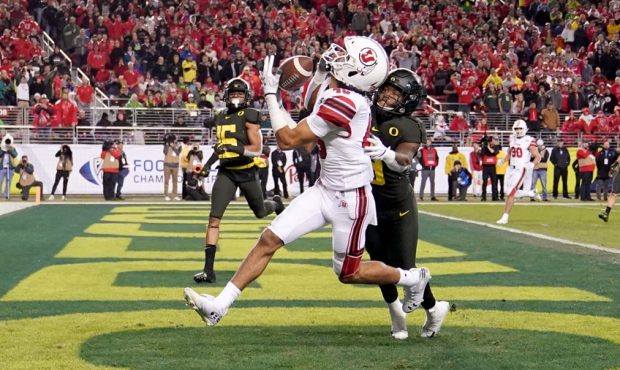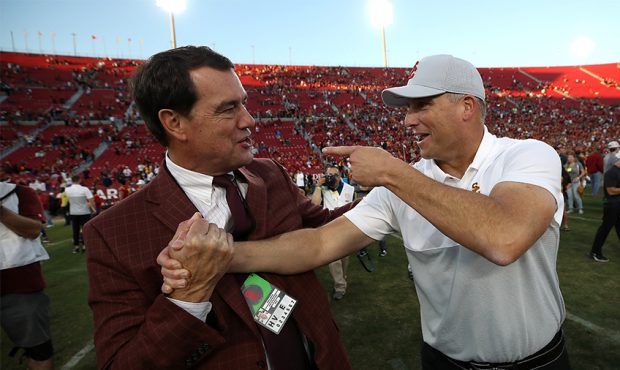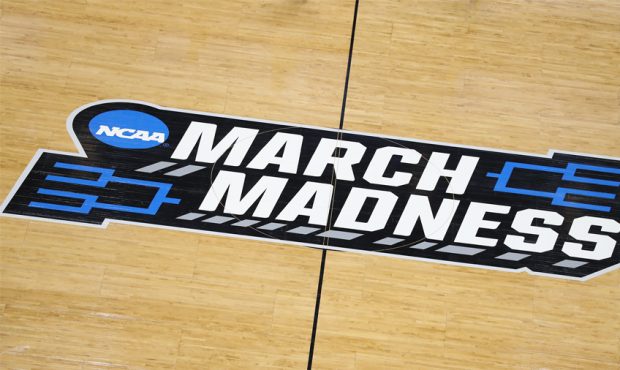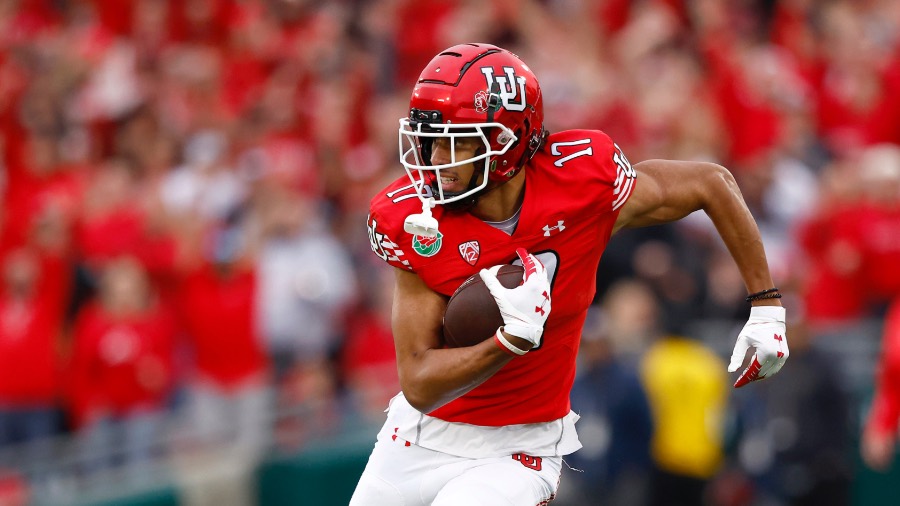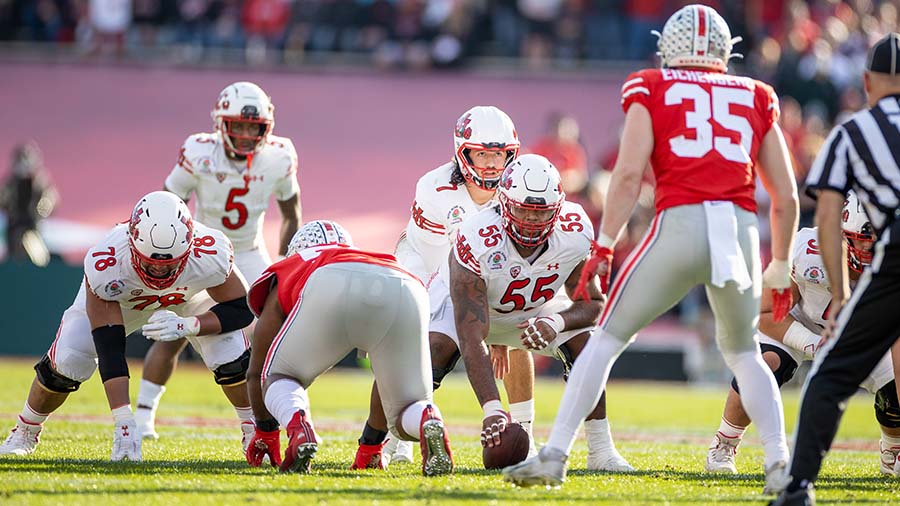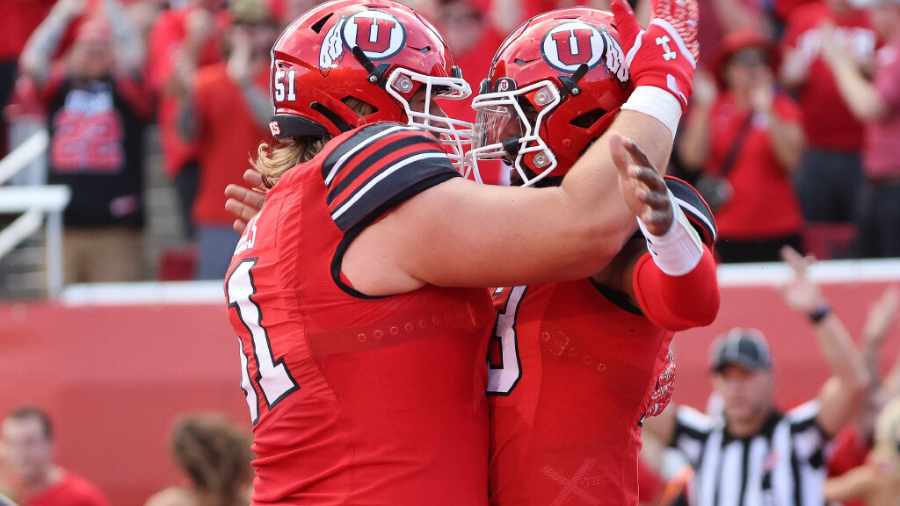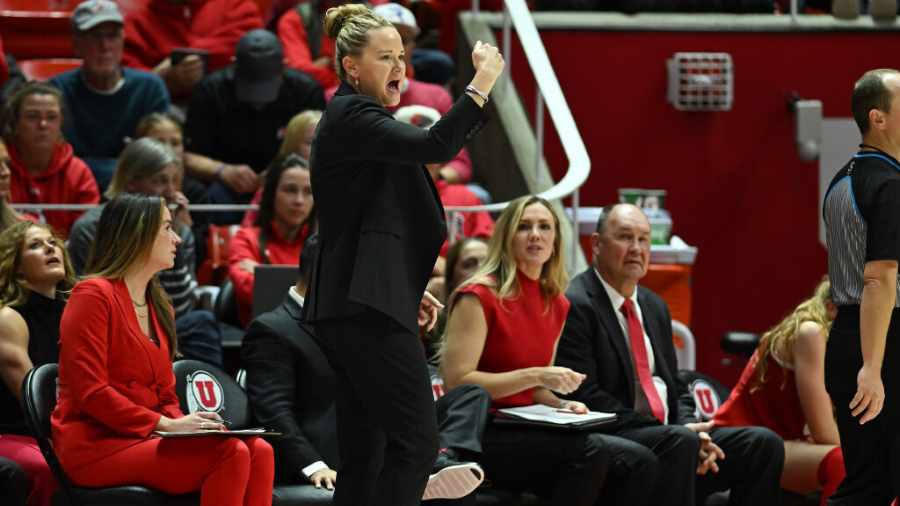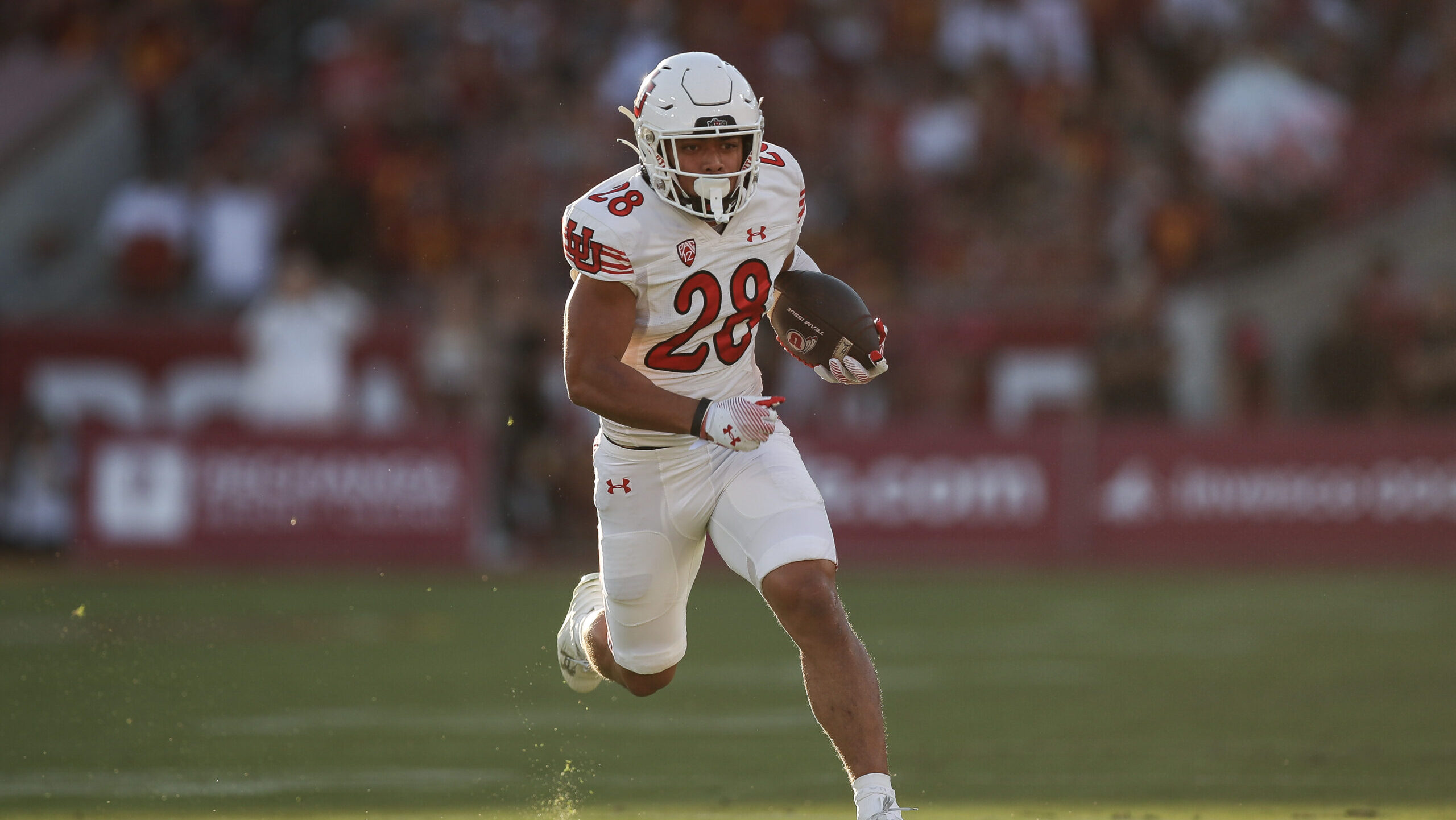Pitch: Utah Should Make A Move To The Big 12; Bring BYU Along
Mar 30, 2021, 9:26 AM
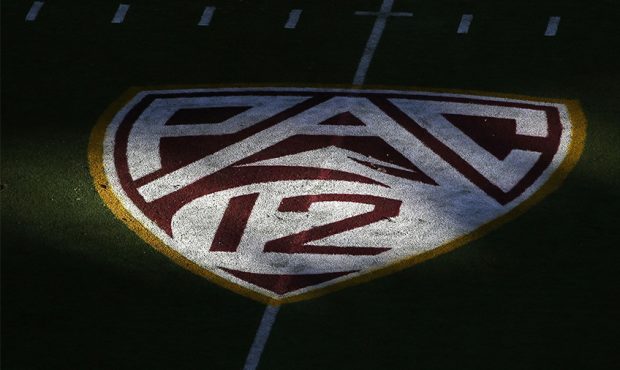
TEMPE, AZ - OCTOBER 29: The PAC 12 logo on the field during the college football game between the Arizona State Sun Devils and the Colorado Buffaloes at Sun Devil Stadium on October 29, 2011 in Tempe, Arizona. The Sun Devils defeated the Buffaloes 48-14. (Photo by Christian Petersen/Getty Images)
(Photo by Christian Petersen/Getty Images)
SALT LAKE CITY, Utah – Utah getting the call up to the Pac-12 just over a decade ago was a game-changer for the athletics department and the school itself.
The move from the Mountain West to a power conference brought in millions upon millions of more dollars in revenue from media rights deals and selling red Pac-12 stickers to anyone remotely associated with the University of Utah didn’t hurt the bottom line.
However, maybe now is the time for the Utes to start poking around and inquiring about a move to a different conference, perhaps the Big 12.
This might sound absurd on the surface for the Utes who are new to being in a power league but the Pac-12 has been slipping behind the other conferences in on-field success – specifically in football with just three total games played in the College Football Playoff since its inception in 2014 – and also more importantly in revenue.
The Pac-12 earned $32.2 million from the 2019 fiscal year from its media rights deal which is just about even with the ACC which paid out between $27 – $34 million, the Big 12 pays out $38.2 million to $42 million, the SEC at $43.7 million per school, and the Big Ten lapped them all at $55.6 million. The SEC deal will skyrocket after its premier game on CBS each week is getting fair market value by going to ABC and that could increase its annual payout per team by $20 million.
That gap between the SEC and Big Ten compared to the rest is eye-popping. Some of it has to do with the cycle of a media rights deal with who signs most recent because when the Pac-12 made its deal which included owning control of the Pac-12 Networks, the league had the richest media rights deal at $3 billion over 12 years.
A lot has changed in that time and most of it has to do with the Pac-12 Networks which have massively disappointed in revenue and promises from soon-to-be-former commissioner Larry Scott. Owning the Pac-12 Networks and not partnering with a larger company like Fox or ESPN which other power leagues have done to secure distribution has really hurt the league in gettings product out to the masses.
The conference decided to bet on itself and that bet has gone belly up after a decade of minimal exposure and distribution rights for the network which is currently at a paltry 14.8 million subscribers for its national network and an even worse 8.5 million combined for its six regional networks.
The Pac-12’s current media rights deal runs through the spring of 2024 but the timeline to start the negotiations will be sometime in late 2022, and perhaps that deal will move it to closer the front of the line of the Big Ten and SEC. However, it is all cyclical and the Big Ten which signed a six-year deal in 2018 will have negotiations at the same time as the Pac-12. That is not good as the Big Ten already makes $23 million more than the Pac-12 and has had better success in the College Football Playoff.
So, it is starting to be crystal clear of the revenue gap widening even among the Power 5 leagues and the Pac-12 is dangerously close to being left behind.
Pac-12 Conference Network Is A Complete Failure
Jon Wilner of the San Jose Mercury News who is one of the best in the business at covering the Pac-12, and on the economic side he recently published an article on how bad the conference is in terms of its owned and operated network.
The promises that were made were never met and the networks are not even on DirecTV and the money they are getting for the national network is absurdly low at 13 cents per subscriber. Compare that to the SEC Network which commanded 74 cents per subscriber as of 2017 and has approximately 70 million subscribers, and the Big Ten’s subscribers fees are at 43 cents per subscriber.
Pac-12/Washington: 98 cents (sub/month)
Pac-12/Arizona: 91 cents
Pac-12/Bay Area: 80 cents
Pac-12/Los Angeles: 73 cents
Pac-12/Mountain: 53 cents
Pac-12/Oregon: 52 cents
Pac-12/National: 13 cents
The goal was clearly to own it all and not share revenue with a media company like ESPN or FOX. However, bypassing two of the largest media companies, that put the conference in a tough spot leverage-wise in getting cable and satellite companies to sign on, even within the footprint of the conference.
According to reports, the Pac-12 Network was expected to make at least $3 million annually and the best-case scenario was to be $10 million per year per school.
Wilner’s reporting below notes that the conference has not even paid out $3 million per year per school.
2013: None listed
2014: $862,000 per school
2015: $1,677,500 per school
2016: $1,980,250 per school
2017: $2,522,167 per school
2018: $2,666,667 per school
2019: $2,789,583 per school
2020: Not yet available
Those numbers are so far off base from what the conference projected and maybe one of the SEC’s slogans of “It Just Means More” really fits as to why that conference has approximately 70 million households that subscribe to their conference network, which is nearly five times the Pac-12 Network.
Even partnering with ESPN or FOX might not get the conference the money it thought it could earn, but it would be making a lot more with those two companies just by leveraging its other channels to make sure the Pac-12 Network would be in as many houses as possible.
The Pac-12 would be helped by not only getting in a time machine and partnering with a major media company but also winning can solve a lot. Having USC good in the conference helps the league get more eyeballs on them than even Oregon, let alone Utah. Back when Pete Carroll was on the sidelines, the Trojans sidelines at practices and games were filled with famous people like Will Ferrell, Snoop Dogg, and others.
Having others get in the playoff and regularly in the top 10 would put the spotlight on the league, as would getting creative with 12 p.m. ET kickoffs the league is starting to experiment with.
Why Utah Should Reach Out To The Big 12
If there is to be any conference realignment it will revolve around teams going independent; which is something USC athletics director Mike Bohn said in passing that “everything is on the table” in regards to its football program back in February of 2020. If any school could do it, the Trojans would be one to be able to put together a good football schedule and get rewarded for it.
Even that statement by Bohn, which he backtracked to a degree, shows the Pac-12 is not exactly on solid ground.
The 10-team Big 12 conference is a more likely scenario for adding teams, and especially so since the league has played footsy with the likes of BYU, Cincinnati, South Florida, and Central Florida. The conference didn’t bite to add those schools but perhaps the lure of going after some Pac-12 teams could be interesting.
With Utah having no historical or sentimental reasons to stick in the Pac-12 long-term, they should be proactive and not be left behind and call Big 12 commissioner Bob Bowlsby to start wheeling and dealing to see if Utah can join the conference.
The Utes should also strongly encourage the league to bring BYU along as a package deal to at the very least get back to 12 teams. Bowlsby and the league has already heard the Cougars pitch to join the league just a few years ago, and know that the biggest benefit is the large following BYU has due to being affiliated with The Church of Jesus Christ of Latter-Day Saints.
There are a few other options for the Big 12 to add teams if it wishes to take down the Pac-12. This could be seen as a reverse of what the then-Pac-10 tried to do when Scott was first hired as commissioner and was very close to having a Pac-16 with six Big 12 schools, including gems like Texas and Oklahoma.
If the Big 12 wanted to gut the Pac-12, they could go after the Los Angeles schools to get to 12, add the Arizona schools, plus bring in Utah and BYU for the first 16-team conference. However, it might be a hard sell for USC and UCLA to bolt to the Big 12.
As for the Arizona schools, there have been murmurs over the past few years of the Big 12 going after them, so this would not be an entirely out-of-the-box scenario.
Big 12 would be wise to begin cuddling up to Arizona, Arizona State with expansion in mind before leagues begin negotiating their new TV deals. The fissures in the Pac-12 have never been wider. https://t.co/O8vMdnx5Io
— David Ubben (@davidubben) May 15, 2018
Just like Utah, the Arizona school’s history is not as deep-rooted as the rest of the Pac-12 conference. Arizona State has been to just two Rose Bowls since they joined the conference back in 1978 and Arizona has not achieved that mark. TCU has more Rose Bowl appearances than the Wildcats.
Money is a real issue and the Pac-12 is slowly falling behind and while its next media rights deal could help with that revenue gap with the likes of the ACC and Big 12 but it will still be miles behind the SEC and Big Ten and grow further behind.
That is why the Utes need to make joining the Big 12 its top priority. There would be much fewer 8 p.m. or later kick times just for TV, the Utes would have multiple games in Texas which the school recruits heavily and the conference gets more respect in the rankings.
Just look at last season when Iowa State lost three games but was still a top-10 in the College Football Playoff rankings; the Pac-12 doesn’t get that benefit of the doubt. Utah’s 2019 team had just one loss and ranked No. 5 heading into the Pac-12 championship, but even a win over a ranked Oregon team would not have guaranteed the Utes a spot in the playoffs.
All of those reasons are why the Utes need to get into the Big 12. There is the money that comes with the conference, which is nice, but also by bringing along BYU, the rivalry could finally get back to its rightful spot as the final game of the regular season.

